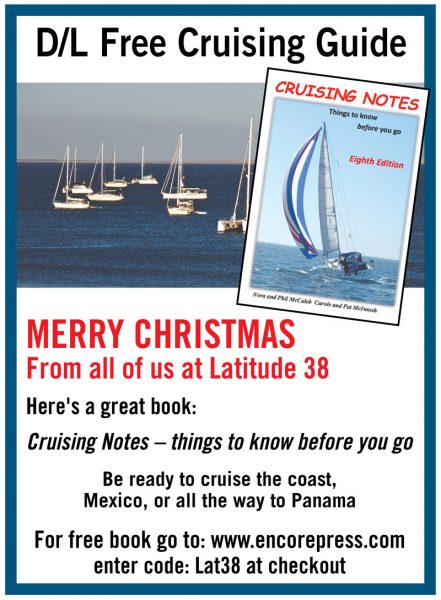
Susie Goodall’s Boat Dismasted in Pitchpole
British Golden Globe competitor Susie Goodall’s Rustler 36 pitchpoled and dismasted in the Southern Ocean some 2,000 miles west of Cape Horn today. Falmouth Coastguard picked up her distress call at 11:00 UTC. They alerted Race Control and the Chilean Maritime Search and Rescue authorities responsible for this sector of the South Pacific.
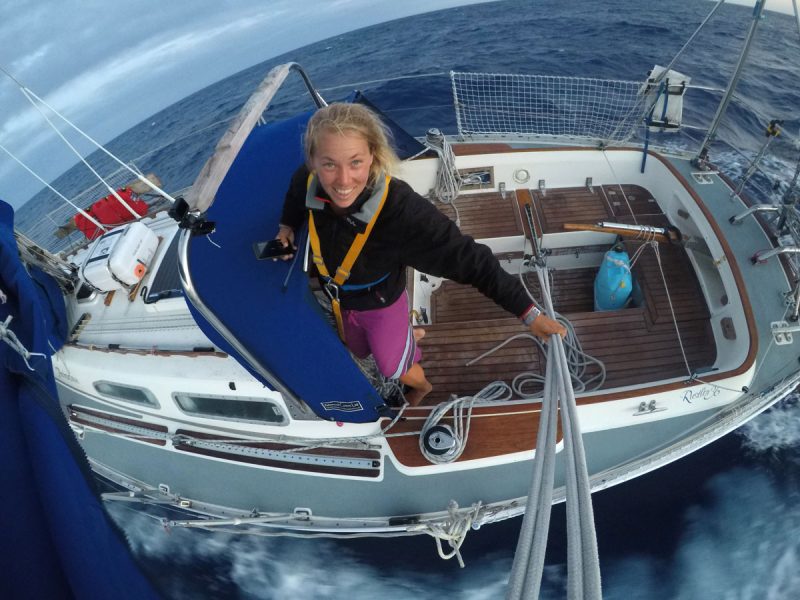
Goodall, 29, from Falmouth, was the youngest competitor — and the only woman — in the brutal solo nonstop Golden Globe Race. She was in fourth place at the time, riding out a ferocious storm with 60-knot winds and massive seas aboard DHL Starlight.
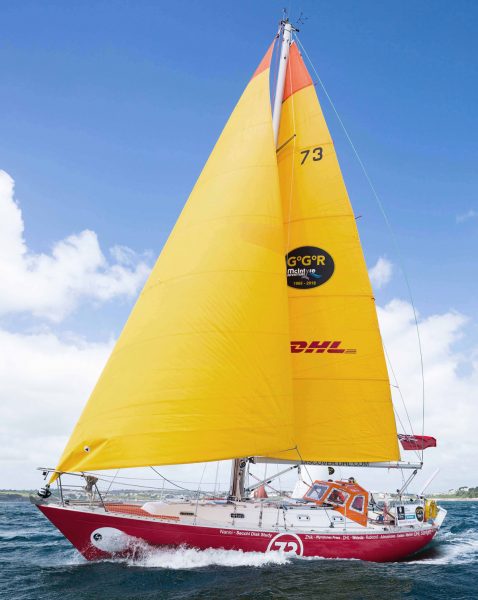
In her last text message to Race Control before the dismasting, she reported: “Taking a hammering! Wondering what on earth I’m doing out here.”
In a subsequent message, she wrote: “Dismasted. Hull OK. No form of jury rig, Total loss. Position: 45º 27.787 S 122º 23.537 W.” Goodall had originally thought the hull was holed because the boat filled with water. “The only thing left is the hull and deck, which remain intact. We were pitchpoled and I was thrown across the cabin and knocked out for a while.”
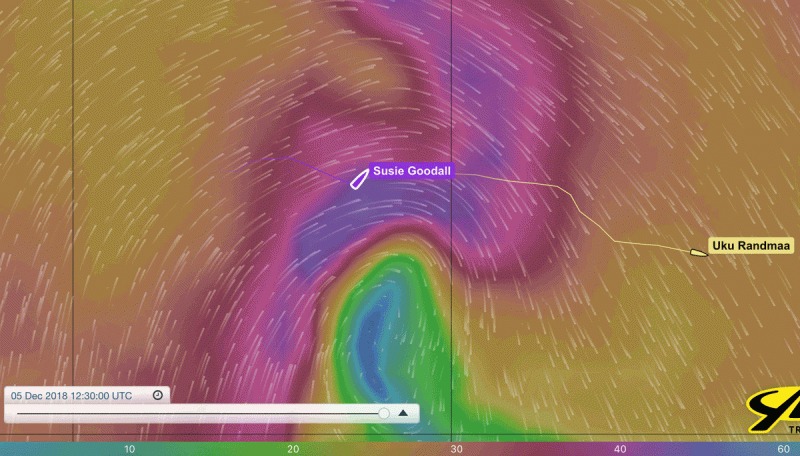
Speaking with emotion but sounding very much in control of her situation, Goodall also confirmed that she had secured all hatches, portholes and safety equipment, and did not need immediate assistance. Before the incident, she had felt in control. But then the safety tube on her windvane broke. She deployed a drogue and took down the mainsail. She was below decks when the boat pitchpoled. When she returned on deck to assess the damage, she found that the line attached to the drogue had parted.
Goodall also reported that she had been “beaten up and badly bruised,” with cuts and scratches and a big bump on her head. Doctors are monitoring her symptoms and providing direct medical advice.
The winds dropped down to 45 knots, and conditions are likely to improve further as the storm continues to head east.
The nearest GGR competitor is Estonion Uku Randmaa, 400 miles ahead of Goodall and about to face the same storm conditions, so it is impractical for him to turn about. It is far safer for Hungarian-American Istvan Kopar, 780 miles to the west, to continue his downwind course and intercept DHL Starlight. The fleet has been alerted to Susie’s situation, and Kopar expects to reach her position in six days. Chilean authorities have contacted a ship 480 miles southwest of Goodall’s position and requested assistance. That ship expects to reach the area in two days.
The leaders in the race, Frenchman Jean-Luc Van Den Heede and Dutchman Mark Slats, are climbing up the Atlantic. According to the leaderboard, Van Den Heede’s current anticipated finish date is January 18. He has to nurse his damaged rig when sailing to weather, to avoid slamming and sending shockwaves up the mast. Second-placed Slats has thus had the chance to make up some time on him. The race started from Les Sables-d’Olonne, France, on July 1. Seven boats out of 18 starters are still racing.
BCDC to Vote on Westpoint Settlement Tomorrow
Tomorrow, the BCDC commissioners will vote on a settlement with Westpoint Harbor, marking the possible conclusion of a years-long conflict between one of the Bay Area’s newest marinas and a government agency that many people feel has gone astray of its founding mission. The commission will meet on Thursday, Dec. 6, at 1 p.m. in the Bay Area Metro Center, 375 Beale Street, Board Room, First Floor, San Francisco.
“The BCDC Staff and the Enforcement Committee have recommended approval,” said Bob Wilson, a member of the San Francisco Bay Stewardship Alliance. The proposed settlement is the result of months of negotiations between Westpoint and the Bay Conservation and Development Commission, and comes in the midst of a state audit of the BCDC.
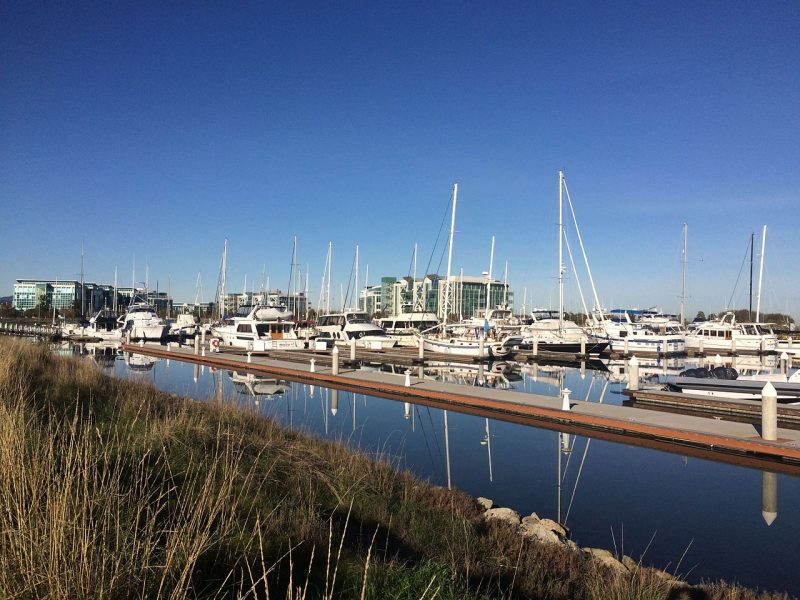
“Many boaters are writing to the BCDC to support the settlement. Support is overwhelming!” said Wilson. “The letters get posted several times ahead of the meeting.”
The Friends of Westpoint Harbor — an advocacy group that has supported the marina through its trials with the BCDC — has also circulated a petition urging people to weigh in. “We can take nothing for granted, so the Friends of Westpoint Harbor urges you to continue voicing your support for the marina by sending emails or letters to the Commission before their next meeting, or by attending the Commission meeting to provide visual and moral support to Westpoint Harbor.”
We’ll bring you the results of tomorrow’s BCDC meeting on an upcoming ‘Lectronic.
Ad: Free Cruising Guide
Randall Reeves’ Full Cape Horn Story
After he rounded Cape Horn on Thursday, November 29, Randall Reeves’ blogs took a little while to catch up. It was like hearing the final score of a big game, but not getting to see the highlights of how it all went down until days later. The much-awaited post came yesterday on the Figure 8 blog.
“What can one say about Cape Horn, except that he is happy to have rounded it safely and in such fine weather,” Reeves wrote. “Apart from the chilling rain, I could not have asked for it half as good. I could not have manufactured the beautiful four days of Force 8; the strong westerlies that followed, nor the fine day we had at the Horn. I could not have put myself in the way of such blessed timing. That was nothing but chance in the raw.”
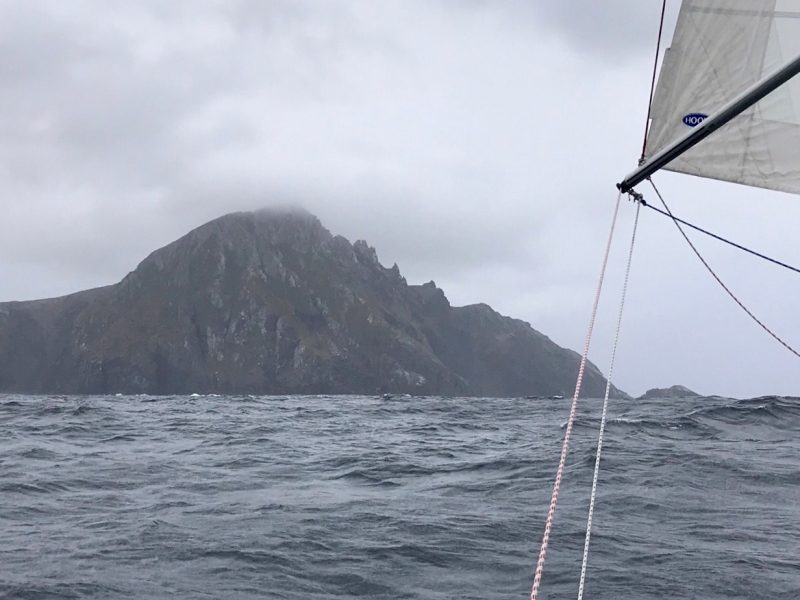
The days leading up to Reeves’ rounding were marked by magnificent sailing. “One cannot call these anything but excellent, simply excellent sailing conditions — one gets to see first hand during weeks like this why the Clipper Route was the most efficient around the world for commercial shipping prior to steam and the Panama Canal. Mo has had consistently strong westerlies since November 15, when she crossed into 39S, and has logged 150 miles a day or more on all except three of them, and one of those was 149 miles. In the last seven days, we’ve sailed 1,078 nautical miles for an average of 154 miles per day.”
This extraordinary run began with four days of gale-force (or Force-8) conditions, a test that Reeves prepared for meticulously, and felt satisfied with the results on the other end. “My goal going into this blow was to not use the storm jib and to not deploy the drogue. In the first case, I reefed the working headsail down hard. There wasn’t much canvas left by the time I got done rolling, but what there was must have been three times larger than the storm jib. In the second case, I wasn’t tempted. Seas were large but not steep, and the breaking crests were lazy, falling back in on themselves.”
Following the blow, Reeves reflected, and “gnawed the bone of satisfaction. Satisfaction with Mo and how well she’d worked through a long bit of Southern Ocean heavy weather.”
Reeves’ original plan was to shoot for Isla Diego Ramirez, which is about 50 miles southwest of Cape Horn, and, “like my home island of the Farallones west of the Golden Gate Bridge, lie on the edge of the continental shelf,” Reeves wrote. “Between Diego and the Horn, water shallows quickly from a mean 15,000 feet to as little as 300 feet. Seas that have had the entire Southern Ocean in which to roam can stack up over this shelf and become dangerous in short order. There are more than a few stories of yachts rolled or pitchpoled in this area in dire weather.”
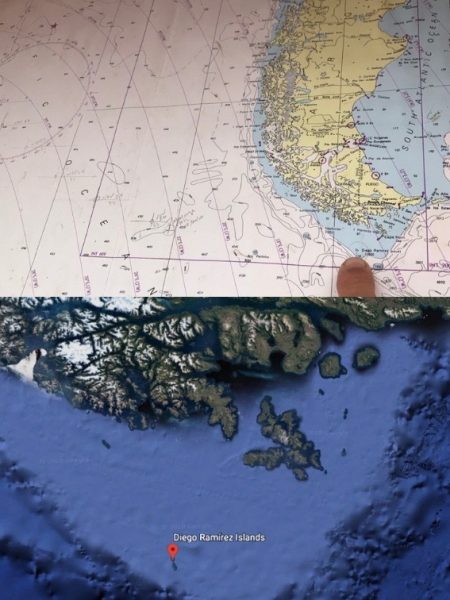
But as he drew nearer, the forecast for making an approach to the Horn seemed possible, and too tempting to pass up.
“I’ve decided to position for a run north of Isla Diego Ramirez. Why? Because I think I can. The weather looks manageable; the strong winds between now and climbing over the continental shelf are NW and will be knocked down by the peninsula; and the seas we have, a lumpy 8 and 10, aren’t enough to cause problems in shallow water. And because a chance to see Cape Horn from sea — that’s once in a lifetime.”
As he drew nearer still, Reeves was taking heavy seas — “not too high, but steep as walls and breaking often” — on his beam. He worried again about the fabled amplification of seas in the shallower water near the Horn. “Is this a silly risk, pulling in close to Cape Horn when south about Diego would be safer? What is ‘just to see it from sea’ really worth?
“It is worth all, says a voice. I keep our heading due east for the Horn. Mo can manage.” In the final days of Reeves’ approach, the sea state relaxed and the water “turned emerald green, a sure sign the coast is near. I look up to the north and see what I think are tall thunderheads hull down on the horizon. But the black smudges intermixed are the clue. In binoculars, I can see that the thunderheads are the snowy peaks of Tierra del Fuego; the black smudges are the black mountain faces.”
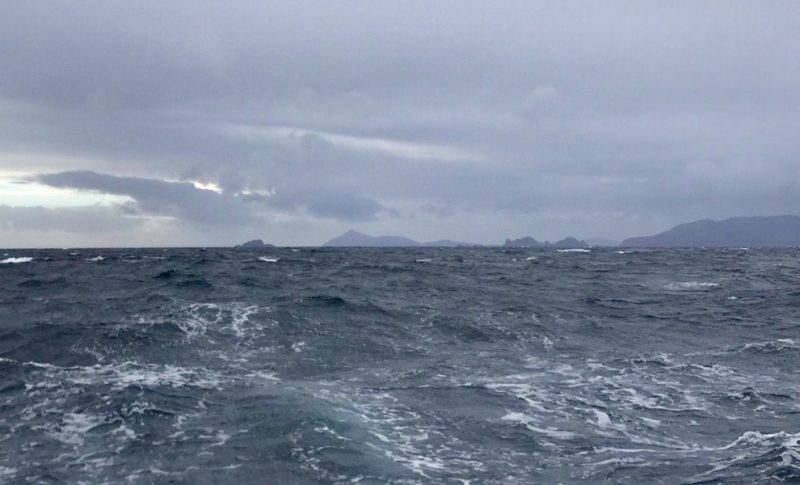
Upon finally passing the Horn, Reeves reflected on his luck. “My god, not just to round the damned thing, satisfaction plenty, nor even to have it hove into view from afar, but to run up to within a mile such that I could see the great slabs of black rock, the olive green mosses on its flanks, the light house. To hear the waves crash after their run around the globe. To shudder at the thought of it hulking out of the murk, lee and frothing, on a dirty night.
“Mo and I are 57 days at sea now, but really, this is where it starts.”
Meanwhile . . .
And don’t forget that two months after leaving Victoria, BC, Jeanne Socrates continues to close in on Cape Horn . . .
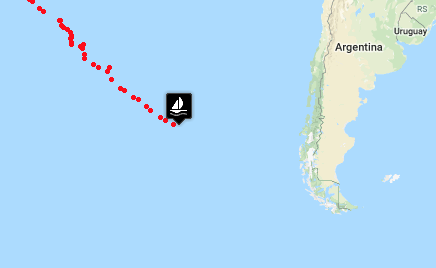
New Captain Takes the Helm of West Marine
After the sudden departure of CEO Doug Robinson after not quite a year on the job, West Marine has found a new captain to take the helm. The company just reported that they’ve hired retail executive Ken Seipel as CEO. The announcement describes Seipel as “an experienced leader with a strong track record helping grow privately held retail companies as well as Fortune 500 brands.” He was most recently CEO of Gabe’s, an East Coast discount retailer, and prior to that held executive positions with Old Navy, Target and JCPenney.
Upon his arrival Seipel commented, “It is an honor to join the West Marine team. For more than 50 years, West Marine has been the best outfitter of boating-related products and gear. I am excited to lead the brand as we strengthen our market position in boating products, improve our customer value proposition, and enhance our core customers’ ability to make the most of their boating experience.”
West Marine, like most businesses, is adapting to a rapidly changing world. The company has worked to balance its efforts in core markets like sailing while exploring the evolving world of water sports. Sailors will be keen to learn how Seipel (who just started on Monday) plans to chart the boating retailer’s course.

